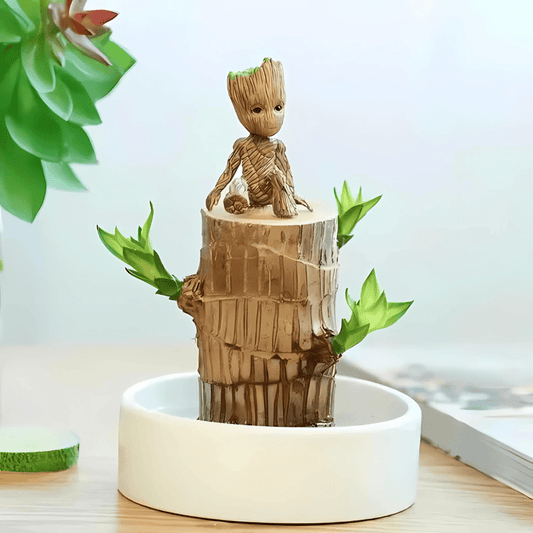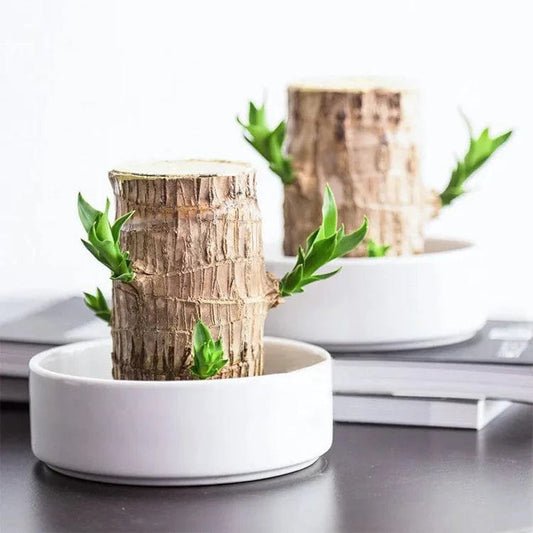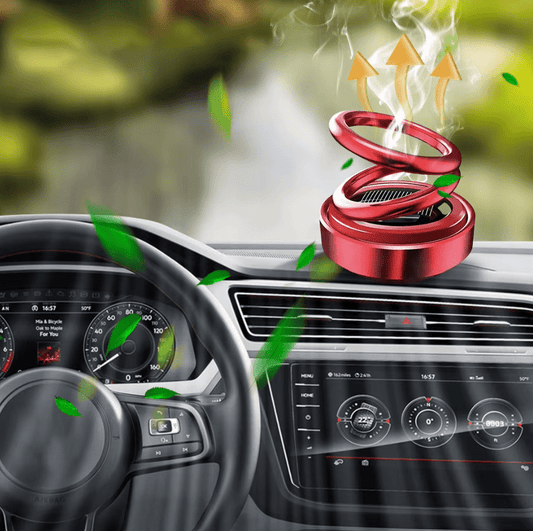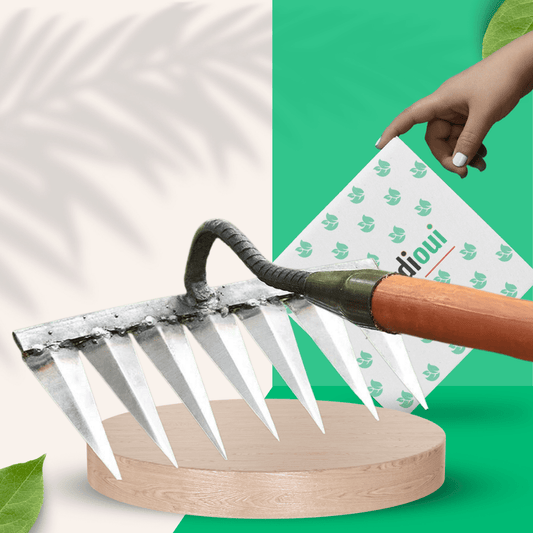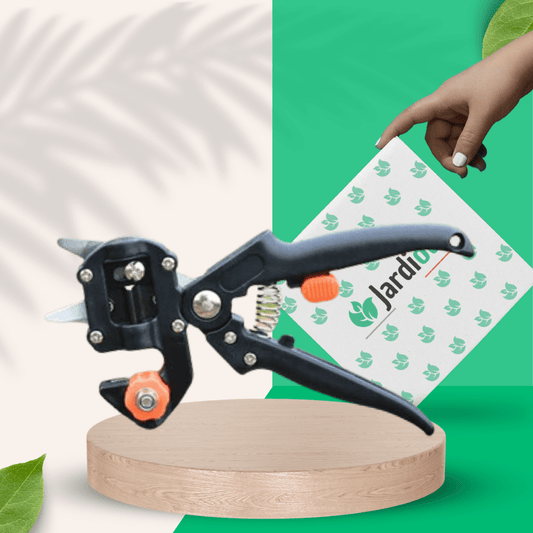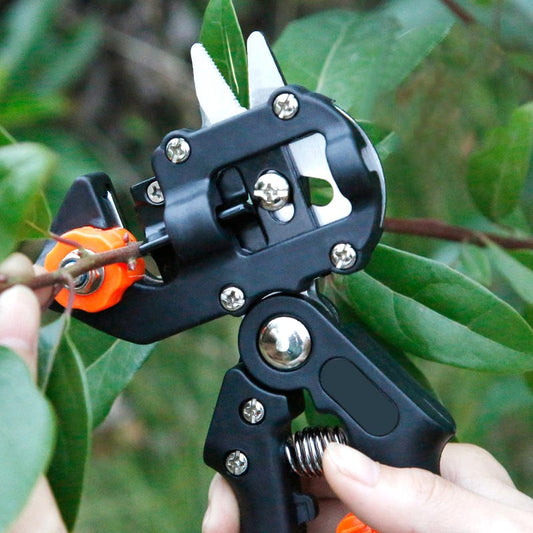How to Grow Tomato Plants?
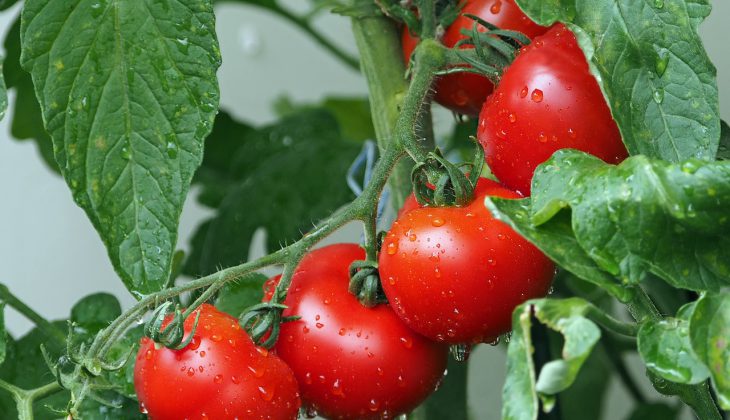
What could be more delicious in summer than biting into a tomato freshly picked from the garden? Once you taste homegrown tomatoes, you'll never go back. This pillar of Mediterranean cuisine belongs to the nightshade family (Solanaceae), is classified as a fruit, but is prepared and consumed as a vegetable.
Some gardeners are hesitant to grow tomatoes because of diseases and pests that can attack the plants.
However, by growing disease-resistant varieties, anyone can reap a tasty garden tomato crop.
BASICS 🌿
- Botanical name: Lycopersicon esculentum (syn. Solanum licopersicum)
- Zones: 10-11, usually grown as an annual
- Height/Span: Bushy, creeping or climbing habit; between 30 cm and 3 m high, and 30 cm to 1 m wide
- Exposition : Plein soleil
- Foliage: Fast-growing, densely branched bush or vine with hairy, fleshy stems and leaves, with a distinctive scent.
- Flowers and fruits: Yellow starry flowers followed by red, orange, yellow, purple, pink, black or green fruits. Fruits can be round, oval or pear-shaped, from the size of a cherry to large tomatoes weighing several kilos.
- Toxicity: Leaves, stems and unripe fruits can be toxic to dogs and cats. Ripe tomatoes are not, but some animals may have an upset stomach or allergic reaction. Sensitive people may be allergic to the fruit or develop a rash upon contact with the plants. Symptoms vary from mild to severe.
- Deer Resistance: Most plants in the nightshade family, including tomatoes, do not appeal to deer. However, some gardeners find that their plants are sometimes nibbled.

TYPES OF TOMATOES 🍅
All tomatoes are either determinate, indeterminate, or semi-determinate:
- Determinate tomatoes: Also called tree tomatoes, these plants measure between 30 cm and 1 m and produce a large harvest in one go.
- Indeterminate tomatoes: Also called climbing tomatoes, these plants reach up to 3 m and produce tomatoes throughout the season.
- Semi-determinate tomatoes: These plants are more compact than indeterminate varieties and produce all season long.
-
Heirloom or hybrid tomatoes?
Ancient: Ancient varieties have been around for hundreds of years, generally have the best flavor, and produce faithfully from seed.
Hybrids: Hybrids result from the crossing of two or more varieties, for specific characteristics such as disease resistance and cold tolerance. They are often less tasty than old varieties. - Common Types of Tomatoes: Tomatoes come in different sizes, shapes and moisture contents, which can help determine which type to grow and what to use them for. Some of the most common types include beef, campari, pear, plum, salad, grape and cherry tomatoes.

HOW TO PLAN TOMATOES 🌱
When to plant tomatoes:
Tomatoes only grow well in optimal temperatures. Nights should not drop below 12°C, and the ground should be at least 16°C. Prolonged heat above 32°C stops flowering and fruit production. Planting too early or too late can result in stunted plants and low yields.
Where to plant tomatoes:
Tomatoes need 6-8 hours of direct sun and warmth. Change location every year to avoid soil diseases and insect infestations. Avoid planting tomatoes where eggplants, peppers or potatoes were recently grown, as well as near corn or brassicas.
Planting seedlings or young shoots:
Work the soil to a depth of 20 cm, enriching it with organic matter. Tomatoes can develop roots on any part of the buried stem. Cut back side branches that will be buried to encourage sturdier growth. Add a 2 to 5 cm layer of organic mulch around the plants to conserve water and reduce weeds.
Plant spacing:
Indeterminate types should be spaced 90 cm apart. Determined types can be spaced 60cm apart, with 90cm between rows.
Start sowing:
Sow seeds 6-8 weeks before the last expected frost. Plant them 5 mm deep in a growing medium. Keep the soil moist and the indoor temperature at 21°C or higher for germination in 7-14 days. After the seedlings emerge, provide abundant light or use plant lights for 16 hours a day. Transplant into 7 to 10 cm containers when the plants have 3 sets of leaves.
Plant tomatoes in pots:
Choose a location on a terrace or balcony receiving 6-8 hours of sunlight. Determined types will remain smaller. Pots should hold at least 20 liters (30 cm wide and deep) per plant and have good drainage. Use a quality potting soil and mix a slow-release fertilizer into the planting hole.
Growing hanging tomatoes:
For those short on space, grow tomatoes in a hanging basket or inverted pot.
Growing tomatoes indoors:
Growing tomatoes indoors all year round is only recommended for experienced gardeners. Use a heated greenhouse or a room with grow lights. Temperatures should be between 15°C and 30°C for fruiting.

CARE OF TOMATO PLANTS 🌿
-
Sun :
Tomatoes require rich, well-drained soil that stays moist but not soggy.
Work compost, aged manure, worm compost, or a combination of these into the existing soil.
They prefer a slightly acidic pH, between 6.0 and 7.0. -
Amendments and fertilization:
Tomatoes are fast-growing and greedy plants, requiring regular fertilizer for good production. There are many methods and amendments available.
When planting, add a slow-release fertilizer to the planting hole according to the directions. Use a balanced 10-10-10 fertilizer or mix formulated for tomatoes.
Water newly planted seedlings with a starter fertilizer solution to stimulate growth.
Once plants begin to fruit, fertilize every 1 to 2 weeks with fish emulsion, compost tea, or another water-soluble organic fertilizer.
Make sure plants get enough calcium to help prevent blossom-end rot.
Other beneficial organic supplements for tomatoes include bone meal, cottonseed meal, lime, eggshells and used coffee grounds.
For more tips on fertilizing: Garden Fertilization 101 Guide. -
Watering:
Plants require regular watering to grow well. The idea is to water slowly and deeply to encourage a deep root system.
Water in the morning and avoid overhead watering, which will help prevent fungal diseases.
Underwatering will stress the plants and limit their growth.
Overwatering can cause root rot, fungal diseases and loss of fruit quality.
Irregular watering can lead to problems such as flower drop, fruit cracking or blossom-end rot.
For raised beds and plots, use a drip irrigation system or porous hose to deliver water to the roots efficiently.
For containers, water at the base of the plant with a watering wand. Water twice a week or more often during periods of extreme heat. -
Size of tomato plants:
To direct energy toward producing fruit rather than foliage, tomato plants can be pruned, although this is not necessary. Pruning can also help keep pests and diseases away by increasing air circulation and light.
Pinch off suckers growing between the main stem and branches; these will produce little or no fruit.
Remove the suckers when they are small (less thick than a pencil) to avoid shock to the plant.
Prune lower branches to avoid splashing water on the leaves, which can encourage fungal diseases.
Climbing indeterminate types can be pruned to a single head to be trained on a stake or trellis. -
Support :
Tomatoes need support to keep the plants and fruit off the ground. Use tomato stakes or cages for determined bushy types. Indeterminate climbing types require sturdy stakes or cages, ladders or trellises. . -
Harvest :
The fruits should stay on the plant as long as possible to develop the best flavor. Here are some tips for determining if your tomatoes are ready to pick:
Ripe fruit should be fully colored, although some heirloom varieties may retain some green around the stem.
The fruit should be firm but slightly soft, without being mushy.
Plum tomatoes and other low-moisture varieties will stay firmer.
Cherry tomatoes are prone to cracking if left on the vine too long.
Overripe fruit may fall from the plant.
Store picked tomatoes at room temperature on a counter or windowsill until needed. Storing them in the refrigerator may cause loss of flavor.
When daytime temperatures drop below 15°C, fruits will stop ripening. In this case, pull out the entire plant and hang it upside down in a dark space, such as the garage or basement, to finish ripening. You can also harvest and store unripe fruit in a paper bag or cardboard box, placing it between layers of newspaper. Green tomatoes can be eaten fresh, cooked or canned.
Fall cleaning:
Dispose of spent plants by placing them in municipal waste or garden debris collection. Do not bury or compost them, as pathogens can remain and spread to next year's crops.

PESTS, DISEASES AND PROBLEMS OF TOMATOES 🐞
Pests:
The most common pests include aphids, cutworms, mites, slugs, and beetles.
Diseases :
Diseases are often fungal, caused by improper watering and excess moisture.
Problems :
Other problems include flower drop, blossom end rot, fruit cracking, and leaf rolling.







